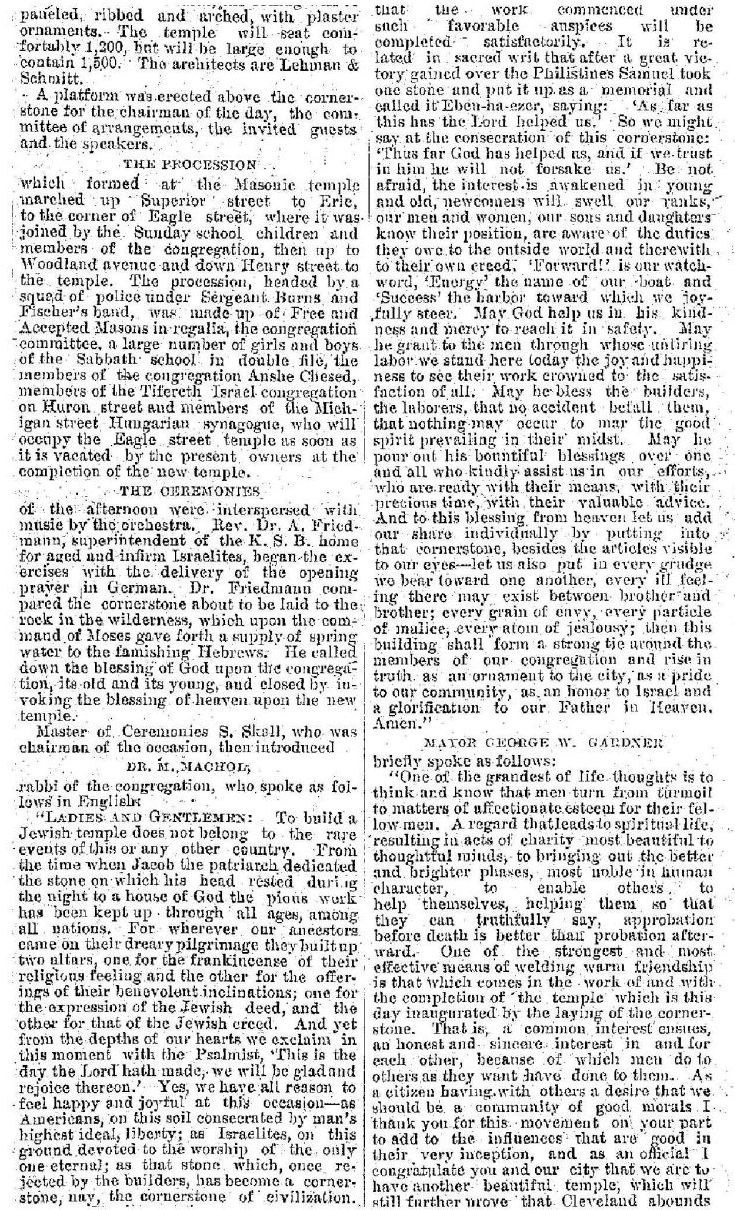|
|
Laying the cornerstone of the Scovill Avenue Temple |
|
| Anshe Chesed - 1886 | ||
|
Prologue
On the afternoon of Thursday, October 21, 1886, a huge crowd
gathered at the corner of Scovill Avenue and Henry (East 25th) Street
for the laying of the cornerstone of the second home of Anshe
Chesed, Cleveland's oldest Jewish congregation. |
|
|
| Cleveland Plain Dealer Friday, October 22, 1886 page 4 |
|
|
|
|
|
|
|
below: the story is completed on page 5 |
|
|
|
Epilogue Anshe Chesed Congregation would occupy its new building on Scovill Avenue just before the High Holy Days in 1887, less than a year after the cornerstone-laying ceremony described above. Cleveland was growing at an accelerating rate. The stream of immigrants from Southern and Eastern Europe that had begun after the Civil War became a great wave. Population more than doubled between 1890 and 1910: from 261,000 to 560,000. Immigrants moved into the old neighborhoods downtown and some to the near west side. More established families moved to newer neighborhoods away from downtown. Some went west of the Cuyahoga River, some south. Most who were east of the river kept moving east. With families of the 1880's and 90s having four or five children, the native-born Jewish population swelled We believe that most Jewish children stayed in Cleveland, married other Jews, and joined the shul in which they had been raised. (How different is that today for most of today's Reform Jewish grandparents.)
They would keep moving east to newer
housing, often following the streetcar lines. We find them living with non-Jewish neighbors
north and south of Euclid Avenue: by 1880 at East 55th, by 1910 almost at University
Circle. In December 1913 the old synagogue building was sold to bakery owner Jacob Makoff, its towers removed, and converted to a movie theater. Scovill Avenue has become Community College Avenue and the land is now part of Cuyahoga Community College. What
happened to the time capsule from 1886 that was in the
Scovill Avenue cornerstone? The copper box was moved to the cornerstone of
the Euclid Avenue Temple. Is it still there? As our
rabbis say, that is a good question.
|




